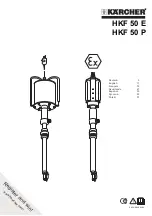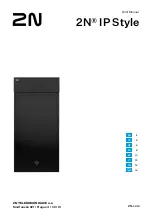
Index
©
National Instruments Corporation
I-7
multirate scanning
with ghost, 2-16 to 2-18
without ghost, 2-14 to 2-16
glitching, 2-22
GPCT0<D..A> bits, 3-23
GPCT1<D..A> bits, 3-23
GroundRef bit, 3-16
I
initializing PCI
for IBM compatible systems, 4-2
for Macintosh computers, 4-4
Input<D..A> bits, 3-22
interrupt programming, 4-56
interrupt sharing, 4-56 to 4-57
Interrupt_Service_Routine function, 4-16
Int/Ext Trig bit, 3-5, 4-53
K
Kick_Start_FIFO function
waveform generation examples
using interrupts, 4-44
using polled writes, 4-38
L
LastChan bit, 3-9
LASTCHANNEL bit, 2-10, 2-13
Link Chaining Mode for DMA transfer,
4-58 to 4-59
M
manual. See documentation.
Misc Command Register
description, 3-5
register map, 3-2
Misc Register Group
Misc Command Register, 3-5
overview, 3-3
register map, 3-2
Serial Command Register, 3-4
Status Register, 3-6
MITE ASIC
initializing PCI, 4-2
Link Chaining Mode for DMA transfer,
4-58 to 4-59
programming for different DMA
transfers, 4-20 to 4-21
re-mapping PCI E Series board, 4-3
MITE_DMAarm function, 4-17, 4-20
MITE_DMAdisarm function, 4-17, 4-20
MITE_DMAgettransfsRemaining
function, 4-20
MITE_DMAProgram function, 4-17, 4-19
MSC_Clock_Configure function
acquiring one sample from channel 0, 4-9
continuous pulse train generation, 4-50
waveform generation, 4-35
MSC_IO_Pin_Configure function, 4-45
MSC_IRQ_Configure function, 4-56
MSC_RTSI_Pin_Configure function, 4-52
multirate scanning with ghost, 2-16 to 2-18
advantages (figure), 2-17
analog input configuration memory
(table), 2-18
occurrences of conversion on channel 1
(figure), 2-17
successive scans (figure), 2-17
multirate scanning without ghost, 2-14 to 2-16
scanning three channels with 4:2:1
sampling rate (figure), 2-16
scanning two channels (figure), 2-15
1:x sampling rate, 2-15
3:1:1 sampling rate, 2-16
N
nonreferenced single-ended channel
assignments (table), 3-13 to 3-14





































